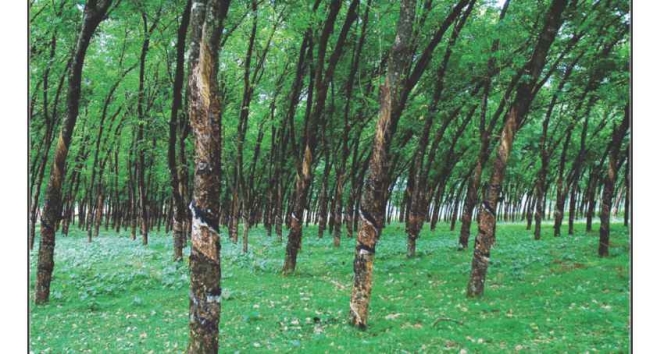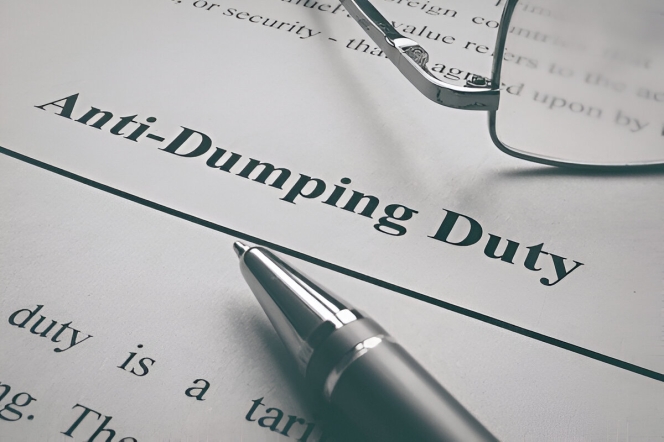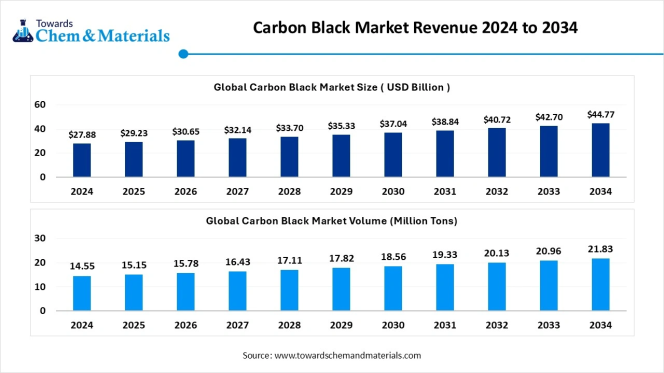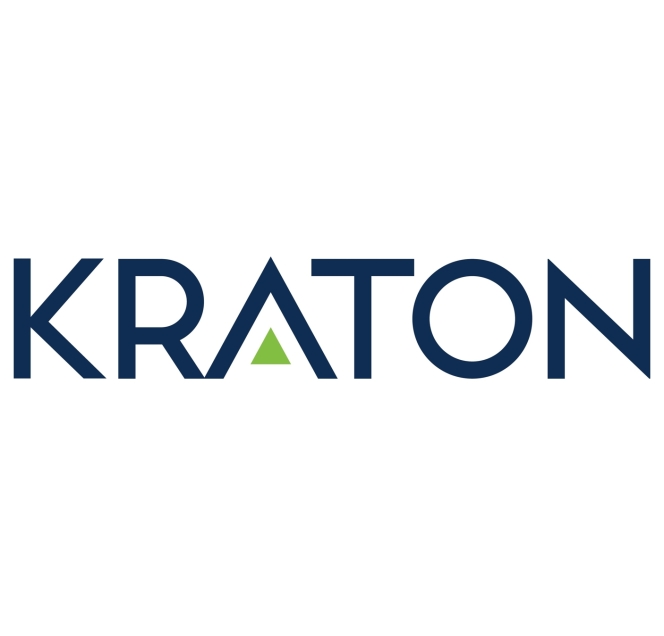
Is Natural Rubber under mortal threat? Is there a possibility that factors like climate change, diseases etc. will bring the plantation industry to its knees?
It is a fact that the traditional rubber growing regions in almost all rubber producing countries in Asia are increasingly constrained by adverse effects of Climate Change. The yield from Hevea in traditional regions is impacted by extreme weather, recurrent cyclones, depression rains and flash floods. The last couple of years have seen interruption to tapping due to unforeseen rains and floods. Another major constraining factor is the recurrent outbreak of new diseases. For example, the outbreak of a new fungal leaf disease (Pestalotiopsis leaf fall disease) reported in Indonesia in 2018 has now spread into around 387,000 ha of mature rubber trees in the country. An estimated 141,000 ha in Thailand, 16,000 ha in Malaysia and 4,000 ha in Sri Lanka are reportedly affected by new fungal leaf diseases.
The low rubber prices that continued over several years resulted in poor maintenance of rubber holdings in almost all producing countries. As resource-starved farmers could not apply fertilizers or adopt proper crop protection measures over several years, rubber trees became weak and lost their resistance to diseases and extreme weather. It is striking to note that the root cause of the decline in yield is the unattractive prices and the resultant poor maintenance of holdings. A major trend reversal of prices can bring glaring positive changes in the natural rubber production sector. The potential national average yield (i.e., the annual production from a unit hectare of tapped trees) is 20 to 30% higher than what is realized now. For example, the average yield in India is currently 1,400 kg per hectare. But a favorable price can increase the average yield to the range of 1,750-1,800 kg. The country had realized the average yield of 1,823 kg in 2012 when the prices ruled high. Moreover, a large extent of mature trees which are currently left untapped in the country will come back to production once farmers find the prices attractive. The country has around 200,000 hectares of mature trees which are left untapped.
More specifically, it is the uneconomic return from the venture that hinders the natural rubber production sector. There is no mortal threat to the supply base as far as prices stay remunerative and the net profit from the venture is attractive. No industry can sustain for a long if it is economically unviable and natural rubber is no exception.
Can a COVID19 like pandemic impact NR industry long term? Do plantations have an effective healthcare plan to ensure labourers’ health and safety?
NR sector globally has almost fully recovered from the impact of the Covide-19. This is particularly true with reference to the global production, consumption, trade, and prices of natural rubber. The prices in key physical markets had crossed over the pre-covid level even by October 2020 and firmed up further since February 2021.
It is true that the production and processing sectors in Thailand and Malaysia are partly hindered as cross-border travel restrictions prevent migrant workers from neighboring countries to return to works. This issue, to a large extent, is resolved by making use of local workers by providing them necessary skills training. Coming to the downstream manufacturing sector, large number of debt-burden units in the MSME sector are reportedly struggling hard to bring their businesses back to normal. On the other side, large-scale manufacturing units, particularly those in auto-tyre manufacturing, have made V-shaped recovery driven by the pent-up momentum generated on lifting of the lockdowns. For healthcare rubber products such as rubber gloves, the epidemic has been a major boon. Taking the global rubber industry as a whole, the industry has already come out from the impact of the pandemic.
Workers engaged in large plantations are provided with social security and healthcare facilities as per the regulatory provisions being followed by the governments in the respective countries.
What are the chances of NR getting totally replaced by alternative rubbers? Will this happen? If so, how soon?
NR getting totally replaced by any alternative material is an impossible event in any case. The relative share of NR in the total quantity of new rubber (i.e., natural rubber and synthetic rubber) globally consumed was less than 30% during early 1970s. From that low level, the relative share of NR has gone up to nearly 50% as of now (47.2% in 2020). Synthetic rubber and natural rubber are not competing each other because technical considerations limit the scope of substitution between the two.
Lack of sufficient economic benefits is considered to be a reason for planters looking for alternate crops that can bring faster financial returns. How real is this? How much of rubber plantations have been replaced by other crops?
A total extent of nearly 0.6 million hectares of rubber trees was estimated to have cut down during 2015-2020 period in Thailand, Viet Nam, China, Malaysia, and India for cultivation of other crops or for conversion of land for non-farm uses. The details are given below:
|
|
Extent of rubber area discarded during the period 2015-2020 (Hectares) |
|
Thailand |
440,000 |
|
Viet Nam |
72,000 |
|
China |
46,000 |
|
Malaysia |
24,000 |
|
India |
4,000 |
In the case of Thailand, farmers are offered attractive cash incentive (More than US$3500 per hectare) by the government for removing aged rubber trees and planting other crops. It means, the shift from rubber in Thailand is largely policy driven. The case of Thailand is an exception. Generally speaking, the crop shift from rubber over the past few years is caused by the unattractive net profit from the venture.
Is plantation industry too slow to modernise itself, technologically as well as in terms of attracting skilled labor?
It is a fact that technological progress is severely constrained in the smallholder-dominated rubber production sector. The unattractive prices that prevailed over the period since 2015 made the farmers deprived of resources. Although high-yielding clones are available, farmers are generally postponing the replating of aged low-yielding trees due to their inability to meet the huge replanting cost. Another factor that prevents smallholders from replanting is the uncertainty of the farmers over the long-term prospects of rubber cultivation. Unattractive prices have also discouraged farmers from adopting good agricultural practices. Poor return from the venture has compelled farmers to discontinue the application of fertilizers, pest and disease management measures, and proper maintenance of holdings. Larger section of farmers has discontinued the use of stimulants and rain-guarded tapping. However, technological progress continued in large plantations owned by corporates, enterprises, and the public sector.
NR supply has always been unstable due to various reasons. Is this prompting manufacturers to look for other options?
There is no serios supply constraint or supply uncertainty as of now except the seasonal shortage. Moreover, all the producing countries have huge potential to increase their supply if the prices become attractive. This point was elaborated earlier.
Is there a campaign being run by alternative rubber sector to put pressure on NR industry?
As stated earlier, NR does not face any threat from alternatives basically due to the reason that the only substitute for natural rubber is natural rubber. In the total global consumption of new rubber (i.e., natural rubber plus synthetic rubber), the relative share of NR is currently around 50% (47.2% in 2020) as against less than 30% in early 1970s. There is no reason to anticipate a fall in the relative share of NR in the next three decades at least.
Are environmental sustainability factors detrimental to NR cultivation?
Environmental considerations can only help NR to gain preference over synthetic rubber, polyurethane, and other materials in various applications because natural rubber is recognised as “an environment-friendly industrial raw material and renewable resource”. The following points establish such a view:
- Rubber plantations purify atmosphere by absorbing CO2 and releasing O2. Based on scientific research undertaken by rubber research institutes in five countries, it is empirically proven that a hectare of rubber plantation annually sequesters as much as 30 tonnes of CO2 from atmosphere which is near to that of the Amazonian base.
- Rubber plantations are a good source of timber and bulk of this goes into furniture industry thereby protecting large extent of forests from being logged every year. Secondary branches of the rubber trees go into the fiber board industry and small twigs are used by the rural people as a source of firewood, both indirectly saving forests.
- Rubber plantations contribute to sustainable soil productivity. Soil productivity has not deteriorated in any of the traditional rubber growing countries which have the history of growing rubber for more than 100 years and already completed 3-4 rubber plantation cycles.
- One of the key factors which had adversely affected food crops production in the last couple of years was climate change. Rubber plantations offer solution to this as it helps balancing carbon level in atmosphere. Rubber is no longer a mono crop. Several food crops are grown along with rubber plants in all NR producing countries. The concept of raising rubber plantations as agro-forestry is being increasingly promoted across countries. It is common among rubber farmers to maintain a portion of their land for other crops. Moreover, rubber holdings provide sources of ancillary income through activities such as horticulture, fishery, honeybee, goat farming, etc.
- In all major natural rubber growing countries, rubber has been identified as a major tool of poverty alleviation and thus helping to achieve the Millennium Development Goals (MDGs).
Are there any concerted efforts being taken up by organisations like ANRPC, IRSG or governments that subsidise NR cultivation?
Developmental activities such as promotion of new-planting and replanting in each country are undertaken by the respective governments only. Among the member governments of ANRPC, Thailand, Malaysia, India, and Sri Lanka provide financial incentives to farmers to promote the cultivation of rubber. The governments usually mobilize the funds needed for the purpose from the same sector by levying a cess on the quantity of NR exported from the country or consumed within the country. The financial assistance cannot be termed as a ‘subsidy’ because the funds needed for the purposes are mobilized from the same sector.
Is it possible to have a globally uniform price structure for NR that can ensure interrupted supply?
In a market driven global economy, commodity prices are largely determined by the forces of supply and demand. This is particularly true in the case of NR which is a strategic industrial raw material coming from more than 10 million smallholder farmers world over. It is not practical to regulate NR prices globally as it is a real challenge to bring together all major producing countries and consuming countries for such a common agenda on terms acceptable to all. (TT)
India Opens Anti-dumping Probe Into Halobutyl Rubber Imports From China, Singapore And US
- By Sharad Matade
- November 06, 2025

India has launched an anti-dumping investigation into imports of Halo-Isobutene-Isoprene Rubber (HIIR) from China, Singapore and the United States, following a complaint from Reliance Sibur Elastomers Private Limited, the Directorate General of Trade Remedies (DGTR) said in a notification.
The domestic producer alleged that the three countries were exporting the rubber to India at unfairly low prices, causing injury to the local industry. The company has sought the imposition of anti-dumping duties on the product, which is used in tyre inner liners, hoses, seals, tank linings, conveyor belts and protective clothing.
The DGTR said there was prima facie evidence that imports had risen “significantly” and were being sold below normal value, resulting in price depression and affecting the domestic manufacturer’s capacity utilisation and profitability. The authority noted that the dumping “is causing material injury to the domestic industry”.
The investigation will cover the period from July 2024 to June 2025, with an examination of injury trends dating back to April 2021.
HIIR, also known as halobutyl rubber, is classified under the broader synthetic rubber tariff category. Reliance Sibur Elastomers is currently the only producer of the material within India.
If the investigation confirms dumping and injury, the DGTR may recommend the imposition of duties to offset the impact and “remove the injury to the domestic industry”. Interested parties have 30 days to submit data and make their representations to the authority.
Global Carbon Black Market To Hit USD 44.8 Bln By 2034, Driven By Tyre And Autom Demand
- By TT News
- November 06, 2025

The global carbon black market is projected to grow from USD 27.88 billion in 2024 to USD 44.77 billion by 2034, expanding at a compound annual growth rate (CAGR) of 4.85 percent between 2025 and 2034, according to a new report by Towards Chemical and Materials, a research arm of Precedence Research.
The study estimates that the global market volume will rise from around 15.15 million tonnes in 2025 to 21.83 million tonnes by 2034, growing at a CAGR of 4.14 percent, driven primarily by increasing demand for tyres, automotive components and high-performance plastics.
Carbon black – a fine black powder made through the incomplete combustion of hydrocarbons – is a critical material used to reinforce rubber in tyre production and enhance strength, durability and UV resistance in plastics, coatings, and batteries.
Asia Pacific accounted for about 58 percent of global market share in 2024 and is expected to remain the largest and fastest-growing regional market, supported by expanding tyre and rubber manufacturing bases in China, India and Southeast Asia. The region’s carbon black market was valued at USD 16.95 billion in 2025 and is projected to reach USD 26 billion by 2034.
“The Asia Pacific region continues to lead both in production and consumption of carbon black, owing to its strong automotive, tyre and plastics industries,” the report noted, adding that China remains the world’s largest producer and consumer.
The furnace black segment dominated the market in 2024, accounting for about 60 percent of global industry share, due to its superior reinforcing properties in tyres and versatility in plastics and coatings. Meanwhile, the tyres and rubber products segment held a 55 percent share, reflecting the material’s indispensable role in the automotive sector.
Performance applications such as batteries, conductive polymers, and specialty coatings are emerging as key growth drivers. Demand for specialty carbon black and conductive grades is rising with the proliferation of electric vehicles, renewable energy systems, and electronics manufacturing.
Artificial intelligence (AI) is also shaping the carbon black industry, with automation and predictive analytics enhancing process efficiency, product consistency, and sustainability, the report said. AI-driven systems are enabling real-time monitoring and predictive maintenance in production plants, reducing waste and energy consumption.
Sustainability remains a key trend, with manufacturers investing in greener technologies, renewable feedstocks and recovered carbon black (rCB) from recycled tyres to meet circular economy goals. “Turning end-of-life tyres and rubber waste into recycled carbon black is opening new sustainable pathways for producers,” the study noted.
Among key players profiled in the report are Tokai Carbon Co., Ltd., Continental Carbon, Jiangsu C-Chem Co., Ltd., Himadri Speciality Chemical Ltd., Sid Richardson Carbon & Energy Company, Cancarb Limited, Philips Carbon Black Ltd., OCI Company Ltd., Columbian Chemicals Co. (Birla Carbon), Aditya Birla Group, and Raven SR, LLC.
Recent industry developments include PCBL Chemical Ltd.’s establishment of a wholly owned US subsidiary in Delaware in July 2025 to enhance supply chain localisation and strengthen its North American footprint, as well as the West Bengal government’s efforts to attract foreign investment in its carbon black industry to support the electric vehicle, tyre, and battery markets.
The report also forecasts rapid growth in North America, fuelled by clean manufacturing practices, sustainable process adoption and expansion in high-performance plastics and battery applications. Europe, meanwhile, is benefiting from stricter environmental regulations and the EU Green Deal, which are promoting eco-friendly and specialty grades.
The global carbon black market is expected to maintain steady long-term growth as manufacturers diversify into advanced applications and invest in sustainable production technologies to meet evolving industrial and environmental demands.
Kraton To Streamline Berre Polymer Operations Focus
- By TT News
- October 26, 2025

Kraton Corporation, a leading global producer of speciality polymers and high-value biobased products derived from pine chemicals, has revealed a new strategic initiative for its Berre, France facility. The plan involves streamlining its polymer operations to concentrate exclusively on manufacturing USBC products, which will result in the cessation of HSBC production at that site.
This move is designed to bolster Kraton's long-term competitiveness by optimising its manufacturing footprint in reaction to a global overcapacity for HSBC. The company has formally started an information and consultation process with the local Works Councils, with a final decision expected following this mandatory period. The company has reaffirmed its commitment to supplying HSBC from its broader global network and to leveraging its worldwide presence to continue adapting to market demands.
Prakash Kolluri, President, Kraton Polymers, said, “Our aim with this plan is to strengthen Kraton’s long-term competitive position by optimising our manufacturing footprint in response to changing market dynamics associated with global overcapacity of HSBC production capability. With this step, we are preparing Kraton for a sustainable future by securing Kraton’s position as the leading global HSBC producer. Kraton is fully committed to supporting our customers through this transition with supply of HSBC products produced within our unmatched global manufacturing network. We recognise the impact of these actions, and are committed to a safe, respectful and supportive transition. The health, safety and well-being of the employees remain our top priorities.”
Continental Advances Circular Economy In Tyres By Expanding Use Of Recycled Materials
- By TT News
- October 23, 2025

Continental is accelerating its transition towards a circular economy by systematically increasing the use of renewable and recycled materials in its tyres. The company, which averaged a 26 percent sustainable material share in 2024, has set an ambitious target to raise this to at least 40 percent within five years. This strategy involves not only internal innovation but also actively encouraging its supply chain to develop and provide more sustainable raw materials.
A critical area of development is finding green alternatives for reinforcement materials like steel and textiles, which are essential for tyre safety, durability and performance. These materials can constitute over 18 percent of a passenger car tyre, and even more in commercial vehicle tyres. Continental is already integrating recycled steel and is pioneering the use of polyester yarn made from recycled PET bottles. Depending on the tyre size, the carcass of a single passenger car tyre can incorporate the equivalent of up to 15 bottles. This recycled polyester, developed with partner OTIZ, is verified to cut CO₂ emissions by approximately 28 percent compared to conventional materials and is already featured in production tyres like the UltraContact NXT.
The company's sustainable material portfolio extends beyond reinforcements. It includes synthetic rubber derived from used cooking oil, bio-based resins from waste streams and silica obtained from rice husk ash. Complementing these material advances is a commitment to greener manufacturing processes. Together with Kordsa, Continental has developed COKOON, an adhesion technology that bonds textiles to rubber without harmful chemicals. In a move to uplift the entire industry, this innovative solution has been made available to all tyre manufacturers as a free, open-source license, demonstrating Continental's broader commitment to fostering industry-wide sustainability.
Dr Matthias Haufe, Head of Material Development and Industrialization, Continental Tires, said, “We are not reinventing the wheel – but we are reinventing the tyre, with more sustainable materials and more environmentally compatible production processes. It’s not just about the rubber itself. We also focus on the materials that give the rubber its shape and make tyres stable and safe. Recycled steel and polyester yarn made from recycled PET bottles are important for more sustainable tyre production. Our goal is to use at least 40 percent renewable and recycled materials in our tyres within five years. Every alternative material brings us an important step closer to this goal. When it comes to sustainability, it’s not just the materials we switch to, but also those we deliberately do without.”







Comments (0)
ADD COMMENT